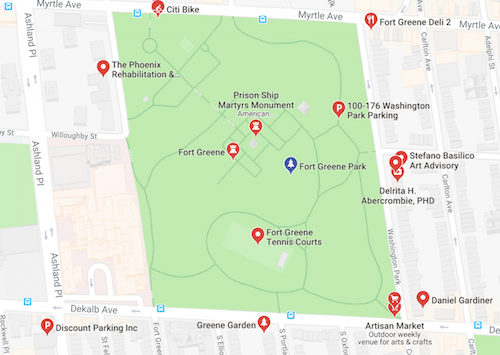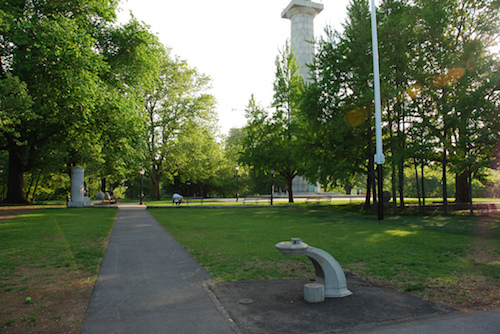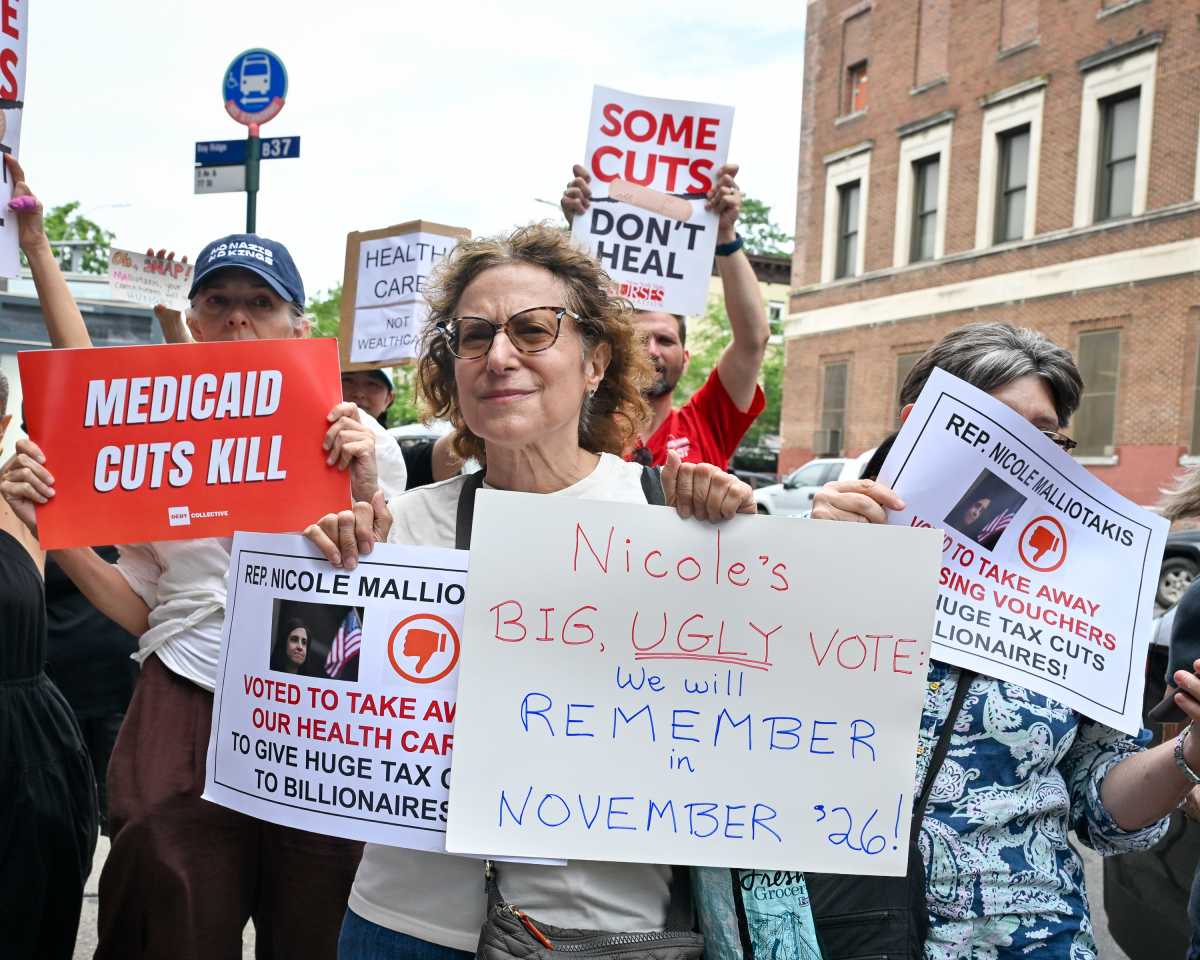In his recent book, “Vanishing New York,” author Jeremiah Moss laments that the city is losing its soul due to the steady disappearance of our iconic places – large and small.
With its decision last week (11/21) to let the city’s Parks Department make major renovations to historic Fort Greene Park, the Landmarks Preservation Commission has apparently added yet another New York City icon to the vanishing city list.
Oh, the park will still be there, but it won’t be as leafy and green. It will be missing more than four dozen trees, lose the beloved grassy mounds created by landscape architect A. E. Bye, be robbed of swaths of grass which will be replaced by more concrete pavement – and denied some historical features that provide the essential character of this park.
 Originally the site of forts built for The Revolutionary War and the War 1812, Walt Whitman, then the editor of the Brooklyn Eagle, advocated making it a park. In the late 19th century, renowned architects Frederick Law Olmstead and Calvert Vaux designed the 30.2-acre park to be bucolic and un-imperial-looking with a short promenade and an abundance of trees and green space.
Originally the site of forts built for The Revolutionary War and the War 1812, Walt Whitman, then the editor of the Brooklyn Eagle, advocated making it a park. In the late 19th century, renowned architects Frederick Law Olmstead and Calvert Vaux designed the 30.2-acre park to be bucolic and un-imperial-looking with a short promenade and an abundance of trees and green space.
The Commission made this terrible decision over community objections based on misleading information from the Parks Department and without requiring an environmental assessment.
One of the misleading statements involves the number and condition of Norway Maple trees and long-lived Zelkova trees to be removed. The community was repeatedly “misinformed” about the number of trees to be removed and their condition. In many presentations, the Parks Department insisted that just 40 trees would be removed and that all were “at the end of their life cycle.”
The reality, indicated in the department’s own forestry report — which we had to FOIL to get released – shows that 58 mature trees would be removed. Of those, the report said, 50 were in good health and being removed for “design purposes,” while the other eight were in less than ideal condition.
Friends of Fort Greene Park has always welcomed infrastructure improvements and badly needed repairs due to deferred maintenance, but the city’s $50 million Parks Without Borders plan to upgrade eight parks across the city erases many historical features that make Fort Greene Park unique. We also believe the removal of healthy trees and reduction of green space is a contradiction of the city’s efforts to promote sustainability and storm resiliency.
A whole corner of Fort Greene Park (Northwest side on Myrtle Ave) will be eviscerated in
contravention of community desires, removing historic Belgian block, some in a rare pink color, and replacing them with inappropriate new materials such as concrete pavers and jet mist.
The city’s plan to replace the Clarke steps altogether with a new 45-foot-wide corner entrance eliminates more than a dozen trees alone and takes away some quiet green space.
The plan also calls for ripping out trees to create a 43-foot-wide paved plaza. That proposed plaza would exceed the width of the Central Park Mall, which has greater pedestrian traffic and is many times larger than Fort Greene Park. In fact, it is wider than nearby Fulton Street, just a few blocks away.
The city also wants to prune the shade trees on the sides bordering the plaza area to “open the view” of the the Prison Ship Martyrs’ Monument, although any horticulturist knows this kind of pruning would compromise the health of the trees, whose roots also would be endangered by the construction of the plaza.
Most egregious of all is the way Parks Department blithely ignored the community’s request for more input and adequate time to study and analyze the design drawings. Instead, the final drawings were never released before they were put on the Landmarks Preservation Committee’s website prior to a hearing.
There is a right way to bring about change and to improve our city’s parks. Unfortunately, the Parks Department chose the wrong way to do it – one that may make the very best features of Fort Greene Park yet another part of the vanishing New York.
Sandy Reiburn is a longtime Fort Greene Resident and a member of Friends of Fort Greene Park










